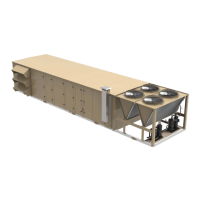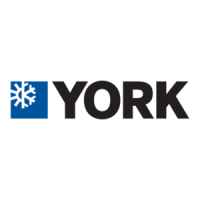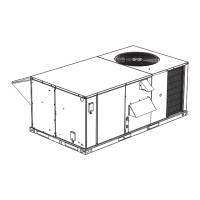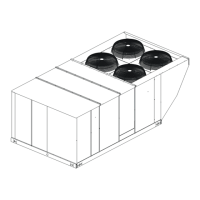
Do you have a question about the York Sun Premier GZA1M Series and is the answer not in the manual?
| Series | Sun Premier GZA1M |
|---|---|
| Refrigerant | R-410A |
| Dimensions (Indoor Unit) | Varies by model |
| Weight (Indoor Unit) | Varies by model |
| Dimensions (Outdoor Unit) | Varies by model |
| Weight (Outdoor Unit) | Varies by model |
| Cooling Capacity | 9, 000 - 36, 000 BTU/h |
| Power Supply | 208/230 V, 1 Phase, 60 Hz |
| Operating Temperature Range (Cooling) | 14°F to 122°F (-10°C to 50°C) |
| Type | Ductless Mini-Split |
| Stages | Single Stage |
Verifies unit installation and basic components before operation.
Guidelines for storing units for extended periods before initial start-up.
Pre-start checks of the system without power applied, focusing on physical and piping integrity.
Checks performed after applying power, including VFDs, rotation, and basic electrical tests.
Verifying refrigerant charge, sub-cooling, and superheat for proper system operation.
Essential pre-start checks specific to gas heat sections, including leak detection.
Details the various automated tests within the start-up wizard for system components.
Verifies the operation and response of outside, return, and exhaust air dampers.
Checks the Energy Recovery Wheel and Supply Fan operation as part of the start-up sequence.
Performs automated checks on the cooling and heating system operations.
Identifies the main and optional control boards and their network communication.
Describes the physical VFD cutout panels and their display options.
Lists configurable parameters for VFDs across various fan and compressor applications.
Explains supply fan alarms, air proving switches, and monitoring functions.
Details how the supply fan speed is controlled in MZVAV units based on duct static pressure.
Explains SZVAV supply fan speed control based on unit modes and cooling/heating demands.
Describes cooling operation for MZVAV units, including sensor inputs and modes.
Explains methods for resetting the Discharge Air Temperature setpoint based on various conditions.
Details compressor numbering, layout, and types (single speed vs. variable speed).
Explains algorithms for sequencing compressors to meet cooling demand effectively.
Covers safety chains, low pressure cutouts, and lockout procedures for compressor protection.
Describes how condenser fans are controlled based on saturated liquid line temperature staging.
Explains the fail-safe operation of condenser fans when sensor values become invalid.
Details the operation of condenser fans under low ambient outdoor air temperature conditions.
Describes how the unit controls humidity levels using the HGRH system in different modes.
Explains different methods used by the unit to determine economizer suitability based on air conditions.
Details the operation of staged and modulating gas heating systems, including fault lists.
Explains staged and modulating electric heating operation, including SCR control and LED indicators.
Covers hot water/steam coil installation, operation, and the freezestat safety function.
Describes heating operation for MZVAV units, including sensor inputs and setpoints.
Explains different ventilation sequence options like fixed minimum, supply fan speed, and airflow measurement.
Details how CO2 sensors control the outside air damper for demand-controlled ventilation.
Describes the three operating scenarios for smoke control: Purge, Pressurization, and Depressurize.
Provides an overview of the unit's user interface display, including screen layout and navigation.
Describes the Status, Alarms, Alarm Log, and Summary menus for viewing unit states.
Covers the Commission and Controller menus for system setup and configuration.
Explains the Update, Details, Schedule, and Start-Up Wizard menus for firmware management and initial setup.
Explains how to use the USB port for saving settings and updating unit controller firmware.
Outlines the steps for updating display and main control board firmware using USB drives.
Describes the automatic firmware update process for control boards and troubleshooting mismatches.
Details how to back up and restore unit configuration parameters using the USB port.
Covers BACnet IP and MS/TP integration, including BTL certification and setup.
Explains the physical connections for FC Bus, SA Bus, Modbus, EQ Bus, and BACnet IP terminals.
Provides recommended settings for BACnet IP and MS/TP configurations.
Describes the MAP gateway for wireless mobile access to Smart Equipment devices.
Details the Verasys system for optimized control and optimization of commercial buildings.
Lists critical faults related to safety chain trips, pressure issues, and communication failures.
Details service priority faults related to component shutdowns, sensor failures, and operational issues.












